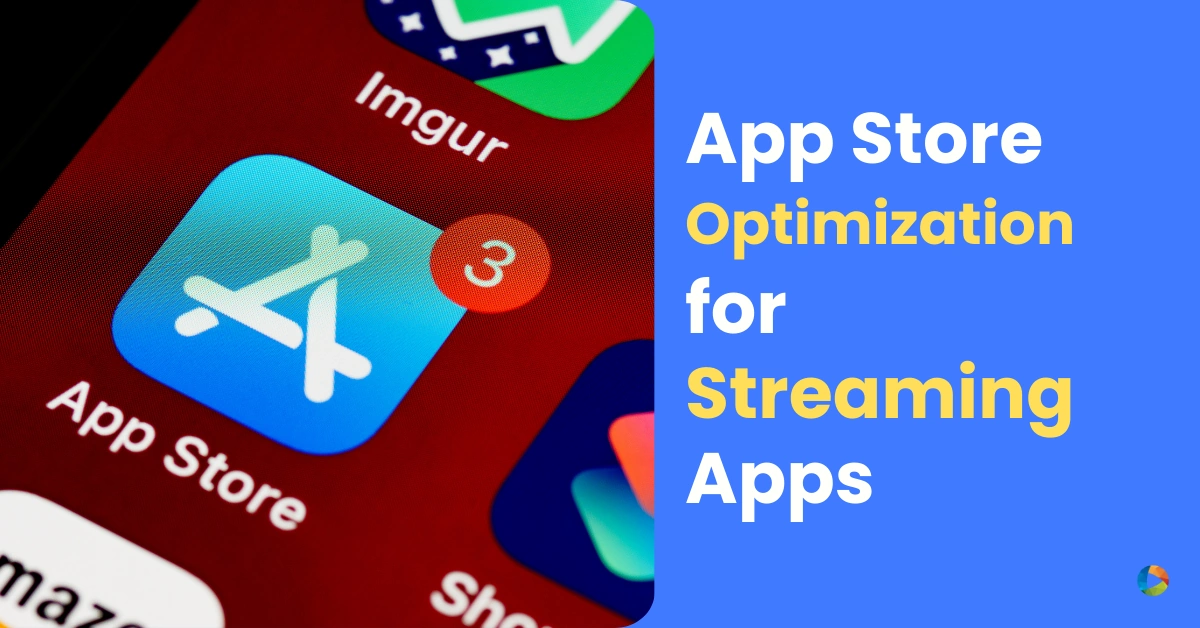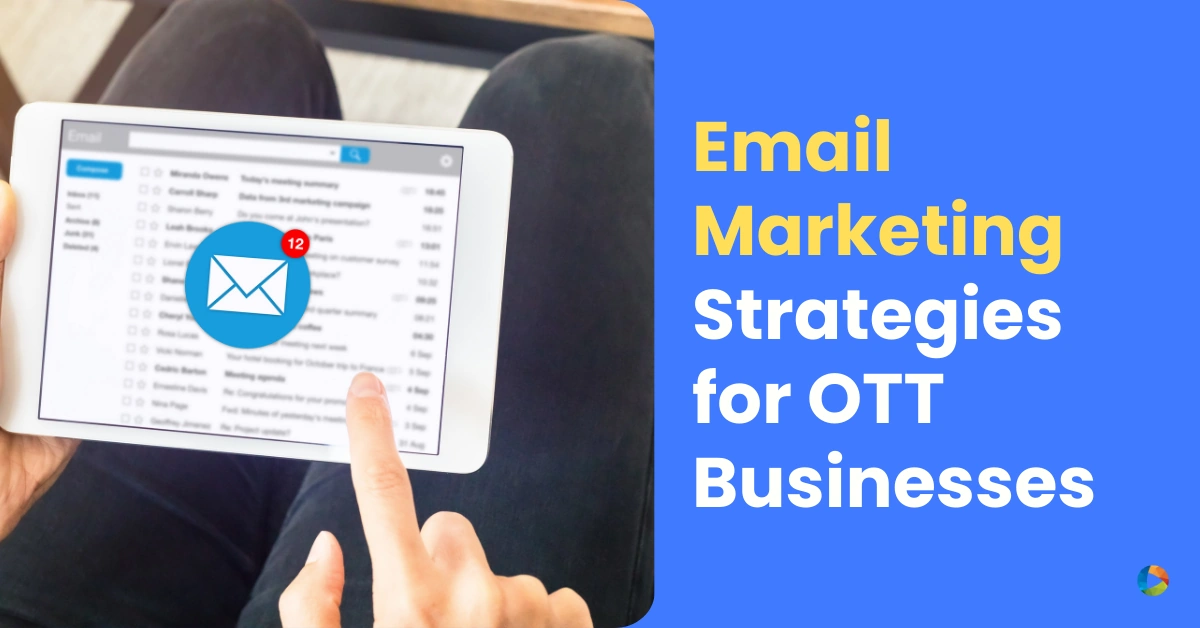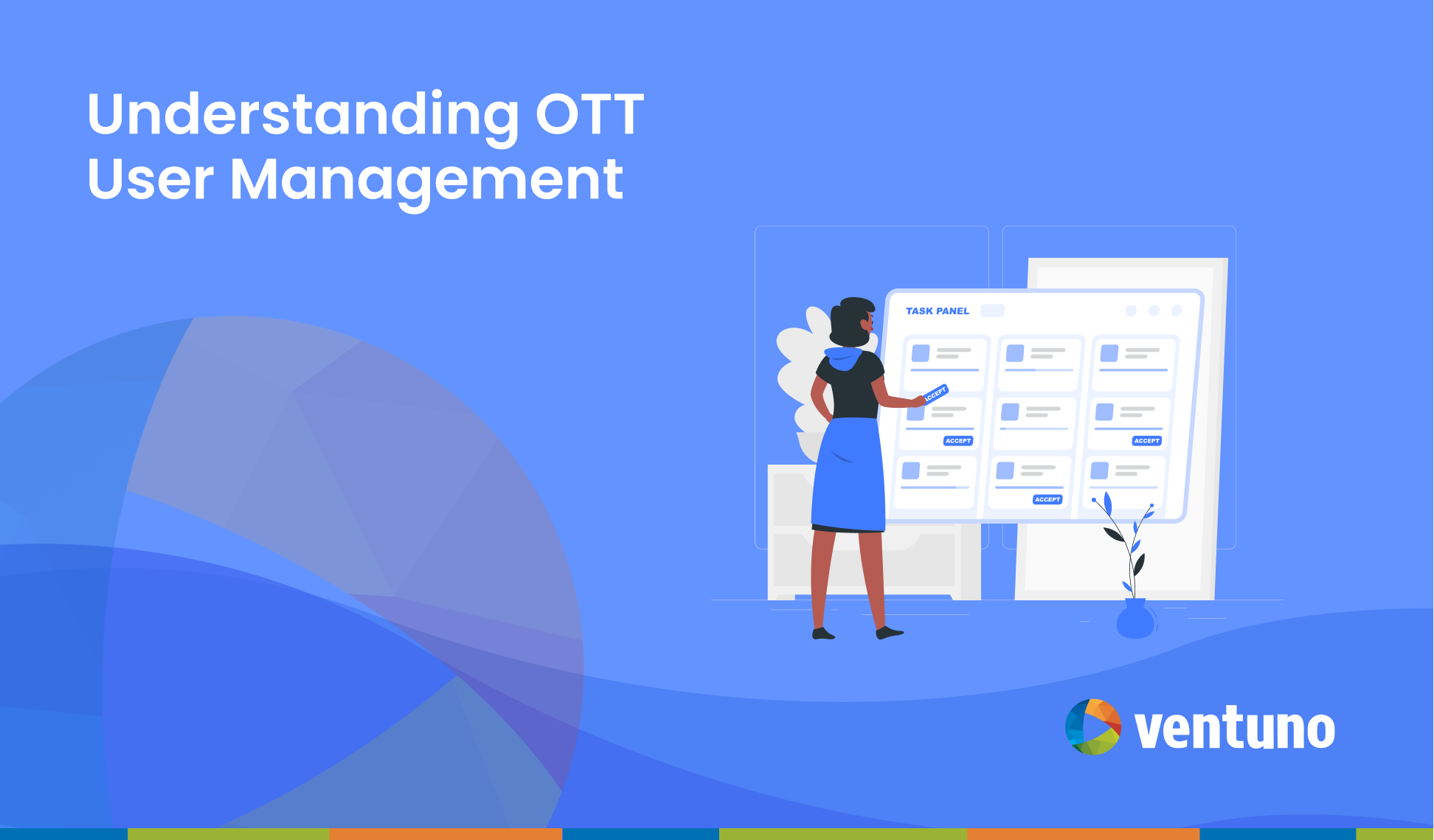The Ultimate Guide on How to Create a Video Website
Last Updated on January 2, 2023 by Anjana Devi
Are you an online entrepreneur who wants to create a video website?
Imagine creating a YouTube-like website and payment platform yourself, to sell your videos with just a few clicks!
What if we told you that the video streaming market is projected to be worth $1,039 billion by 2027, growing from $121.61 million in 2019. Unbelievable, right?!
Well, Ventuno has created this How-to Make a Video Website guide for you! Today is the day you’re going to take action!
The tips and strategies mentioned in this guide will make it possible for you to gain complete control over your video business, with seamless integration of video, ads, and analytics.
So, if you’re looking to:
• Build your own video streaming website
• Explore monetization options
• Turn your fans into paying customers
And partake in the big video streaming market pie, you’ve come to the right place!
Let’s get started.
Table of Contents:
2. Why should you create a video website
4. How to create a video website from scratch
6. Start creating your video streaming platform
What is a Video Website?
Video websites are web-based platforms that are created to host, stream and distribute videos. These can include music videos, movies, news coverage, academic course content, or live streaming (often referred to as YouTube-style videos).
There are 3 key elements you need for a stunning video streaming website:
• Content
• UI/UX
• Data Analytics
Why Should You Create a Video Website?
Before you can read any further about how you can create a video website, let’s address a more important question, first – why should you create one?
Creating a video website for your content is a good idea because:
• It serves as a central hub, a safe-house for your videos
• You can drive traffic to your site with content marketing
• An opportunity to strengthen your SEO efforts
Think of your website as the foundation of your OTT service.
And, unlike free platforms such as YouTube, you have full control over your content. In other words, you don’t have to rely on someone else’s platform.
Let’s understand the benefits of creating your video streaming site.
Higher Revenue
People love to watch videos on big screens. However, computers are computer watching OTT content on the computer is the second most popular medium to watch OTT content after TVs.
Even though the number of mobile users has increased, some people like me still prefer to purchase from a web application (or computer).
The below sample Ventuno platform stats tells us that more users prefer website viewing.
So, some of your subscribers might feel more comfortable signing up to your OTT platform through a browser on their laptop (or desktop).
That’s not it, though. Subscribers are quicker to make web-based payments when the website is secure.
When you create your own video website you can earn from multiple revenue streams. This is different from YouTube, which relies heavily on advertisements to generate revenues.
For example, when you create an educational live streaming website you can charge a monthly fee to sell individual courses or provide free and unlimited access while earning through advertisements.
The Average Revenue Per User (ARPU) in the OTT streaming business is projected to be US$57.79 in 2021. As is clear from the graph below, by 2027, the OTT market is expected to take the biggest leap in revenues and viewership.
Have direct access to your audience
The greatest benefit of distributing video content through your own OTT website is that you are directly connected to your audience.
Here’s an example of how you can establish a direct connection with your audience (push notification feature):
Moreover, you can curate content in blog format, and use social media to drive traffic to your site.
Even if users don’t subscribe to your services via organic search, you can re-target them through ads based on their interests.
So, as the creator, you have complete freedom to run your OTT service. Conversely, audiences can choose their favorite content at any time they want to watch it.
Better growth
What must be the primary reason for OTT’s popularity?
The convenience factor.
It’s a win-win for both sides—consumers and OTT business owners.
As a video creator, you know the importance and challenges associated with building and running an OTT business.
When you are just starting, there is a lot of uncertainty about whether you can sustain yourself.
To overcome this obstacle, we recommend you learn about business strategy and planning before actually beginning work on your video content.
Multiple monetization options
Consumer spending habits are changing, you must pay attention to it.
People love to play and watch more OTT content. So, content owners like you are creating demand through your business model and quality of content.
There are several options available, ranging from traditional advertising to paying a one-time fee or monthly/yearly recurring billing.
Advertisement Video on Demand (AVOD) — OTT is a lucrative platform for advertisers. Viewers can opt for free subscriptions in exchange for the right to display ads to them.
With AVOD, customer acquisition costs are low compared to other models because there is no financial commitment involved. But, you interrupt the user with ads. Instead of irritating viewers with irrelevant ads, you can personalize ads through dynamic, server-side, or client-side advertising.
Subscription Video on Demand (SVOD) — considered being a profitable way to monetize OTT content, it builds a deeper relationship with the consumer. Plus it provides a predictable source of income.
The SVOD monetization model allows OTT owners or distributors to charge fees monthly, quarterly, or annually for unlimited ad-free content. Research shows the astounding growth potential for SVOD models.
Transactional Video on Demand (TVOD) — Whether it’s live or pre-recorded, TVOD means paying for content in full (one-time fee). It is perfect for live events and blockbuster movies.
With this model, you can offer a lot of new content to your customers without them having to pay for an entire month. They only pay for the content they want to watch, while also getting the opportunity to try out your content before they can subscribe to your platform.
However, the major limitation is users are tough to retain because they pay and vanish until the next buzzing film arrives on the platform.
Get in the know on how to create a pay-per-view video website – in a moment.
Hybrid Model — When you bundle all the above-mentioned monetization models it becomes a hybrid model. For example, combining SVOD and AVOD will make your service more affordable.
So out of the number of options listed above, which model would you pick?
In-depth analytics
Analysis helps you make informed decisions. When you have your streaming website, it maximizes the reach of your videos and tailors your marketing messages to engage more people to increase conversions.
So, for instance, a visitor who views and positively reacts to the video previews on your social media channel has a better chance of completing the purchase later. These types of insights make selling your OTT services better.
Besides that, you can understand which aspects of your site engages users, such as:
• How often do your subscribers visit your site?
• What is the time gap between episodes?
• Most watched episodes and seasons.
• On which days are they most active and at what times?
• Which devices are they using?
The data collected does not just reveal viewing patterns for content, it also provides insight into whether a commercial was fully viewed or skipped entirely.
Own your video content (no need to rely on other platforms)
Platforms like YouTube and Vimeo are not the only solutions to distribute your video content online. There’s a better alternative to them, where you can distribute and manage your content based on your own terms and conditions or copyright policies.
You do not want to fall into the same pit of issues that most YouTubers face.
Here’s some of the feedback we have received from content creators who rely on free video streaming platforms (like YouTube):
• You don’t have the right to choose what ads to play within your content.
• The platform shares your ad earnings.
• You have an audience, but you can’t keep fans informed about what’s going on. As a result, you lose fans who could become long-time supporters.
• Since it’s a social media platform, anyone can view your content without subscribing.
• The worst part is the platform can disable your account without giving you any reason.
Instead of struggling with such platforms, you can take control of how you want to display and market your videos by launching your own video website.
Reduce churn
Seeing canceled subscriptions hurts.
One of the better ways you can cut churn is by convincing your customers to buy annual plans over monthly plans. You can even offer quarterly or 6-month plans.
The idea is to retain subscribers so that they continue to use your platform over a longer period.
But, why would someone buy a long-term plan?
Discounts.
Another strategy you can use to reduce OTT platform churn is by offering different subscription packages.
For instance, Netflix offers 4 plans in India ranging from ₹199 to ₹799.
To reduce their churn rate, they’ve introduced a ₹199 mobile-only plan which allows the viewers to watch their content only on one mobile device. As a result, users are more inclined towards this package.
How to Create a Video Website From Scratch?
What you are reading is not a typical article. Instead, we want to serve you a complete guide on how to create a video website — from scratch.
If you’ve binge-read till here, then you’ve decided to be the next internet sensation. You wish to be the next Netflix. You want to create your own video streaming website… but, how do you do it?
Creating a video streaming website is a process, so you want to make sure you do it right from the start.
Consider building your video website from a trusted OTT website development company. After all, your over-the-top product should be intuitive and user-friendly.
Creating your own video website can be intimidating. However, using the simple steps mentioned below can help you get your site off the ground. Use these tips to understand how to build a video hosting website.
• Choose a Video Monetization Platform
The first step towards launching your OTT business is choosing a video platform that is ready with monetization features.
There are 3 types of OTT platforms:
1. Free platforms — YouTube or Twitch, for instance, is the easiest way to get started. However, it lacks customization and monetization features.
• Cloud-based platform — Uses cloud servers to stream the video content through the cloud infrastructure service provider. Example: Brightcove, Dacast, IBM cloud video, Vimeo, Daily Motion, Muvi, etc.
• No-code SaaS platform — Choosing this option eliminates the need for any communication tools, code and maintenance, and payment processing software. Everything is built right into the platform. For example, a SaaS OTT platform like Ventuno is the perfect solution for your video streaming service needs. Stream videos for TV, mobile, and web, as well as manage and monetize your content with no programming skills necessary.
Deciding on how to create your own video website without any prior coding experience can be a tough call to make. Fret not! We’re here to help you. You can create your own video hosting website in any one of these three ways:
• Self-service — This means that you either already have the knowledge and expertise to build websites in-house by yourself or you will learn. You can also hire an experienced developer, or simply use YouTube, with no trouble setting up anything.
• Outsource from a website development company — This is a time-consuming and expensive task. You’d also need third party app integration and regular maintenance.
• Use a SaaS platform — This is a reliable, user-friendly, pay-as-you-go video streaming solution. Its click-and-drop functionality lets you host your VOD and live-stream content.
Determine what features you need from the chosen platform before committing. If you are looking for a platform that allows you to launch, manage, and monetize your video streaming service (both on-demand and live) for web/mobile/tv, consider choosing a SaaS OTT platform.
Customize the Video Website
Next is — customizing your video site, the way you like it.
Pick your website theme, branding elements like logo and colors, add pages, and other basic information. All of this requires no technical skills.
• Customize the homepage
• Navigation menu and settings
• Set channel pages
• Set a playlist page
• Add a live event or schedule a video for playback at a specific time in the future
• Add sections of videos or playlists for viewers on your channel page
You can either do this step by yourself or the support team can also help you redesign your site.
Upload and Organize Your Video Content
You can upload content via:
Option #1: Local storage or local disk (short videos less than 2 GB size)
Option #2: External storage – hard-disk or AWS (large size videos)
In case you want to schedule videos before the release date, you can even do so.
Your video uploading options would look something like this:
Prefer creating playlists if you want to create collections of related videos together in one place. You might use playlists if there is a series of videos on the same topic or theme.
You should be able to upload and share high-quality videos, without having your site going down.
• Upload your videos to the OTT platform
• Organize your videos in a playlist
• Include descriptions for all of your uploaded videos under the video player and inside the playlists
• Include tags for all of your uploaded videos, this enhances its discoverability.
• Configure social media distribution channels
Setup Monetization For Your Video Website
In the above section, we’ve talked in detail about different monetization models.
One of the most popular methods is through ads, which can be displayed before or during a video (AVOD).
You can also make a lot of money with a video website if you use a combination of pay-per-view and subscription streaming.
Streamers can also leverage affiliate programs, sponsored posts, and sponsorships with companies in their niche to make money off their streams.
Here’s the example of the show you want to add the monetization:
As per the below image, select any one type of list of subscriptions:
Create Marketing Strategy
Never underestimate the power of social media and influencer marketing. For example, a review from an influencer is going to mean more subscribers.
Don’t be overwhelmed by the increasing number of OTT channels out there. Get to know your customers’ needs and usage patterns. Think strategically and things will work out in your favor.
Use the below checklist to make sense of these developments:
• Focus on your niche
• Know what device your users are using
• Remember that TV will always be an important medium
• Create a sustainable marketing plan for your channel
The better news is, SaaS OTT platforms come pre-integrated with email marketing and push notifications, so you can set content updates, deals, and promotions.
Your ultimate goal is to drive people to your site, and then the money will follow. So, your marketing strategy would dictate this.
Refer to this post to increase the user base for your OTT service.
Launch Your Video Website
You’ve finally achieved it!
You built an amazing video streaming site. Users can interact with your content, you have a solid monetization strategy and an effective marketing strategy in place.
Now it’s time to launch your video website.
Once you are done with the above steps, run a campaign on social media and other owned marketing channels!
Also, read — How To Launch an OTT Service In 2021?
Analyze Data and Improve
An OTT platform’s success is tied to metrics.
I’m talking about:
• Subscriber count
• Average viewing time
• Average gap watching episodes
• Devices used to watch content
• Churn rate
• Demographic information
• Top user searches
Each one of these data points is critical for retention and acquiring new customers.
However, you should also be able to tweak your content by:
• How much time does the user spend on recommendations?
• What kind of recommendations?
These data points help you determine what type of content you should produce and how much money you should invest into it.
A high churn rate will mean that clients are unsatisfied with the service and will ultimately walk away. It is critical for an OTT provider to closely monitor this metric.
Average watch time is an indicator of how engaged a viewer is with the content. An OTT company must have a strong understanding of the device and operating system its customers use in order to tailor its offerings in line with the customer’s needs.
Why is Netflix called an “Uncrowned King” of the OTT world?
Because they aggressively collect data and understand usage patterns that allow video streaming services like Netflix to personalize content for their users.
FAQs on Video Website
Start Creating Your Video Streaming Platform
Creating a video website is a process, so you need to get it right from the start.
It’s crucial to focus on both the features and user experience of your site, as they’re the deciding factors for growth in your viewership.
Find tons of resources to get started with video streaming.
At Ventuno, we help video content creators like movie producers, directors, animators, and even independent creators (YouTubers) make money from creating videos.
A lot of entrepreneurs come across creating videos but don’t realize the impact it can have on their brand – when they own a content platform.
Take a look at our subscription plans to start today!
You can Sign up for a free trial, before putting your money right away!
Now that you know how to create a live video streaming website, what are you waiting for?
It’s time to get started!
We would love to hear #1 takeaway from this guide. 🙂
Or maybe you have more questions to ask.
Either way, reach out to us at info@ventunotech.com if you would like to discuss!
Looking to launch your streaming app?





